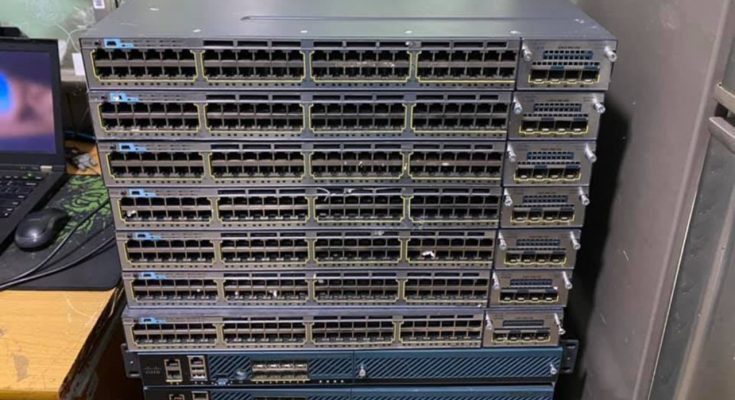A computer server is a specialized machine or software application designed to provide services, resources, or data to other devices, known as clients, over a network. Unlike personal computers, servers are optimized for reliability, scalability, and continuous operation.
Servers can be physical hardware or virtual instances running on a host machine. Their primary purpose is to manage network resources, such as files, applications, databases, or even websites, ensuring clients can access these resources efficiently.
2. The Role of Servers in Networking
Servers are integral to networking because they:
- Facilitate Communication: Servers manage data exchanges between devices, enabling email, instant messaging, and video conferencing.
- Store and Manage Data: Centralized storage on servers allows multiple users to access shared files and databases.
- Host Applications: Servers provide the computing power needed to run applications, from small-scale software to enterprise-level systems.
- Ensure Security: Servers handle authentication, access control, and encryption to protect data and resources.
3. Types of Computer Servers
Servers come in various types, each serving a specific function within a network. Here are some common types:
- Web Servers: Host websites and handle HTTP requests. Examples include Apache and Nginx.
- Database Servers: Store and manage data using systems like MySQL, PostgreSQL, or MongoDB.
- File Servers: Provide centralized storage for files, making them accessible to network users.
- Mail Servers: Manage email communication, sending and receiving messages for clients.
- Application Servers: Run specific applications, delivering functionality to end users or other servers.
- Proxy Servers: Act as intermediaries, forwarding requests and responses between clients and other servers.
- Game Servers: Host multiplayer gaming sessions, ensuring smooth gameplay and synchronization.
- Cloud Servers: Virtual servers hosted in cloud environments, offering scalability and flexibility.
4. Key Components of a Server
Servers, like personal computers, consist of hardware and software components:
- Hardware Components:
- CPU: High-performance processors handle multiple requests simultaneously.
- RAM: Large memory capacity supports multitasking and quick data access.
- Storage: High-speed storage devices (e.g., SSDs) store vast amounts of data.
- Network Interfaces: Enable communication with other devices over a network.
- Power Supplies: Redundant power supplies ensure continuous operation.
- Software Components:
- Operating System: Server-specific OSs like Windows Server, Linux, or UNIX manage hardware and software.
- Server Software: Applications tailored to perform specific server functions, such as web hosting or database management.
5. How Servers Work
Servers operate based on the client-server model, where the client requests a service, and the server fulfills the request. Here’s an example:
- A user enters a URL into a web browser.
- The browser sends an HTTP request to a web server.
- The web server retrieves the requested webpage from its storage or generates it dynamically.
- The server sends the webpage back to the browser for the user to view.
This process happens in milliseconds, enabling the seamless experience we often take for granted.
6. Physical vs. Virtual Servers
- Physical Servers: Dedicated machines that perform server functions. They offer high performance but require significant upfront investment and maintenance.
- Virtual Servers: Software-based instances running on a physical machine. Virtual servers are cost-effective and scalable, often used in cloud computing environments.
7. The Importance of Server Security
Given their critical role, servers are prime targets for cyberattacks. Securing servers involves:
- Firewalls: Blocking unauthorized access.
- Encryption: Protecting data in transit and at rest.
- Regular Updates: Patching vulnerabilities in software and operating systems.
- Access Controls: Limiting who can access server resources.
8. Setting Up a Server
For those looking to set up a server, here are the basic steps:
- Define the Purpose: Decide whether the server will host a website, manage files, or run an application.
- Choose Hardware/Cloud Provider: Select suitable hardware or a cloud service like AWS, Azure, or Google Cloud.
- Install the Operating System: Opt for a server-specific OS.
- Configure Server Software: Install and configure software based on the server’s purpose.
- Set Up Security Measures: Implement firewalls, user authentication, and backups.
9. The Evolution of Servers
Servers have come a long way from large mainframes to compact, powerful machines and virtual instances. The rise of cloud computing and edge computing has further transformed server infrastructure:
- Cloud Computing: Offers on-demand access to server resources, reducing the need for physical hardware.
- Edge Computing: Places servers closer to users, minimizing latency and enhancing performance.
10. Real-World Applications of Servers
Servers power countless aspects of our daily lives, including:
- E-commerce: Managing online stores and processing transactions.
- Streaming Services: Delivering movies, music, and games to users.
- Social Media: Enabling instant communication and content sharing.
- Healthcare: Storing and analyzing patient data for better outcomes.
11. Future Trends in Server Technology
The future of servers is shaped by emerging technologies, such as:
- Artificial Intelligence: Enhancing server operations and predictive analytics.
- Serverless Computing: Allowing developers to focus on applications without managing infrastructure.
- Green Servers: Reducing energy consumption through efficient hardware and cooling solutions.
Conclusion
Computer servers are undeniably the heart of networking, powering the digital experiences we rely on daily. By understanding their functions, types, and importance, you gain insight into the critical infrastructure that drives modern technology. Whether you’re building your first server or exploring advanced solutions, this knowledge equips you to navigate the ever-evolving world of servers with confidence.





